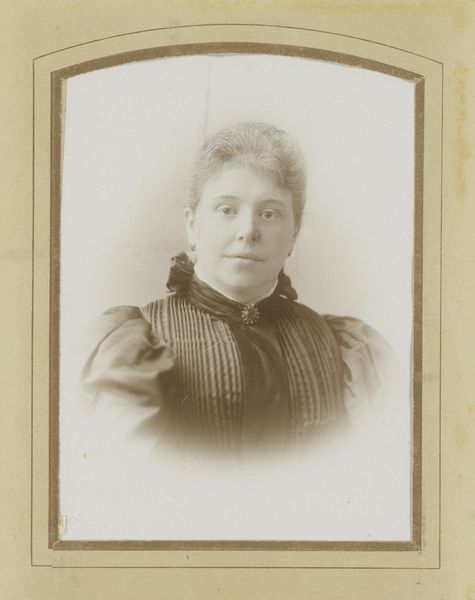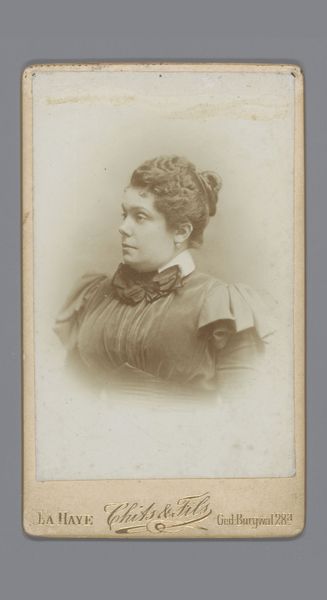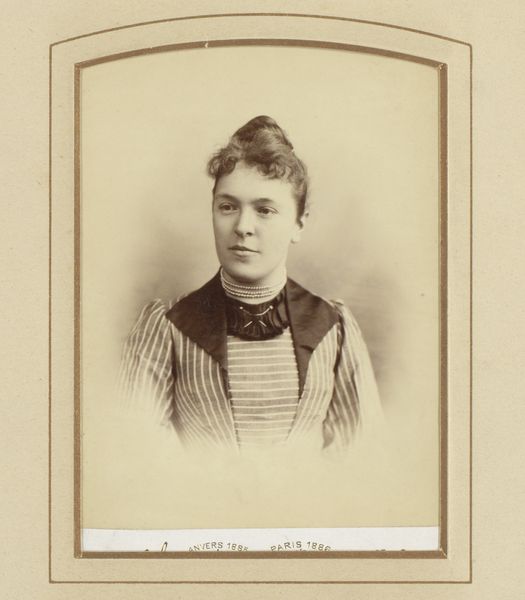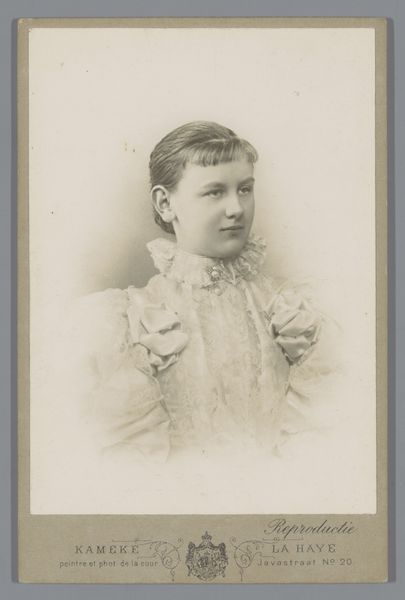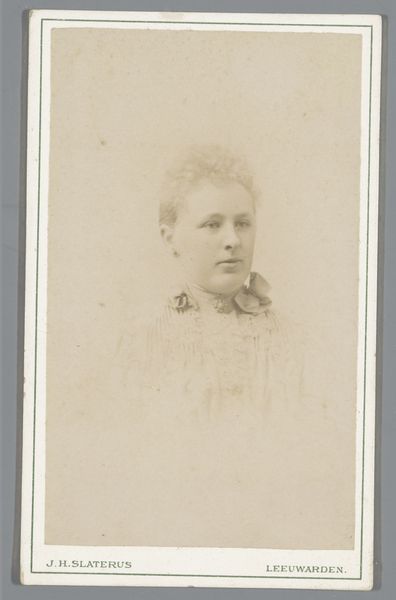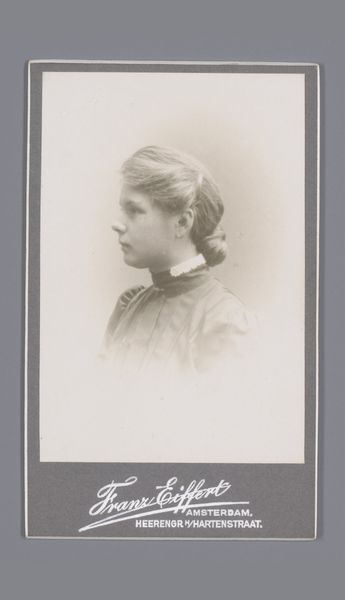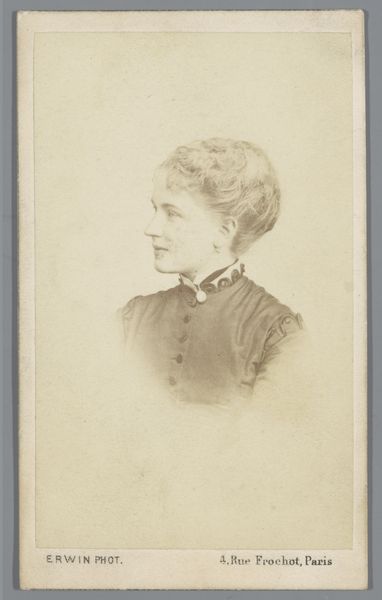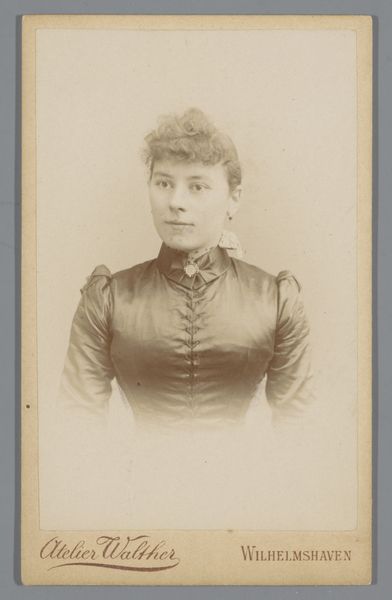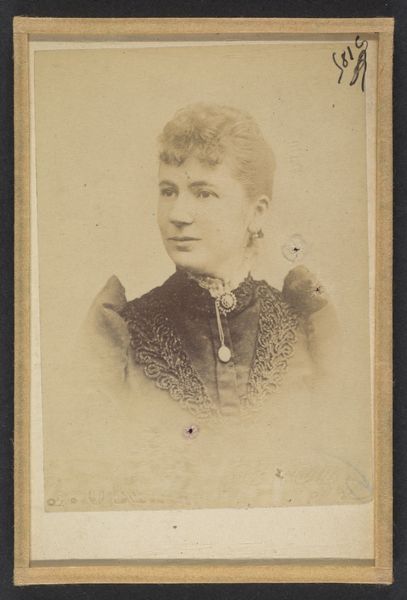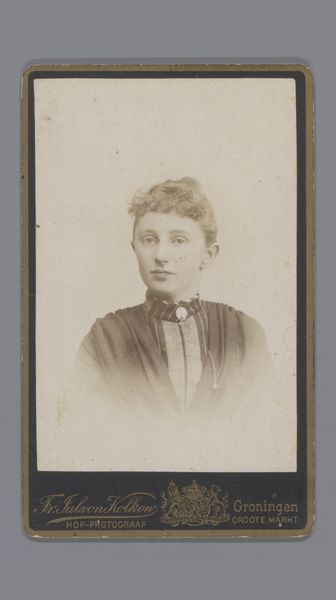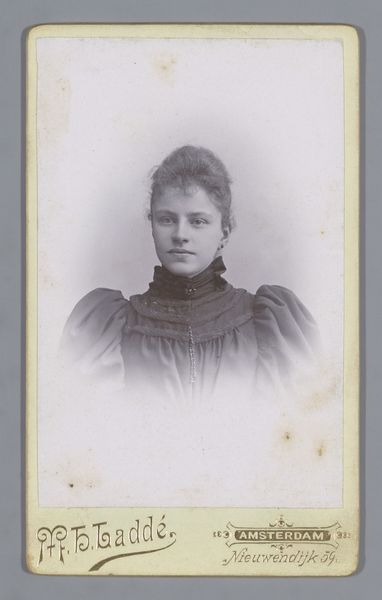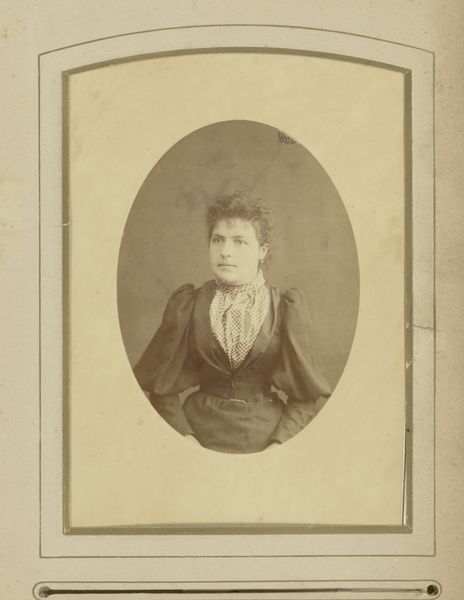
photography
#
portrait
#
charcoal drawing
#
photography
#
pencil drawing
Dimensions: height 138 mm, width 98 mm
Copyright: Rijks Museum: Open Domain
Editor: This portrait, simply titled 'Portret van een vrouw,' created sometime between 1880 and 1910 by A. Anthof, is particularly striking because it seems to use photography to mimic the softness of drawing. The framing draws my eye immediately, but what do you notice when you look at it? Curator: I am intrigued by the geometric relationships within the piece. The rectangular frame immediately establishes a formal boundary, against which the soft, almost ethereal image of the woman is set. Note how the curvature of the frame's inner arch is subtly echoed in the woman's hairstyle. Editor: That's a fascinating point about the echoing curves. Does this mirroring contribute to the overall impact, perhaps harmony? Curator: Precisely. It fosters a visual harmony that draws the eye through a continuous loop, containing the image within the bounds of the picture, making her 'presence' confined to that small rectangular viewing frame. The framing calls our attention to her and only her; notice also how this effect has created tonal relations. The monochromatic palette, nearly sepia, focuses one’s attention squarely on form. Editor: And what about her gaze? She isn’t looking directly at us. Curator: The averted gaze adds another layer of intrigue, doesn't it? Rather than a direct engagement, we’re positioned as observers of a private moment. What does that do to your emotional or intellectual investment? It may suggest modesty, introspection, a retreat into inner thoughts… Editor: So, the focus is less on her personality, but more on how we visually perceive her through line, shape, and composition? It’s like we're analyzing the construction of an image rather than meeting a person. Curator: Exactly. We're invited to examine the formal language of the portrait, understanding how Anthof uses these elements to construct an image of both visual interest and psychological depth, even though it is not direct. A superb artistic construction in line, shade, tone, and framing that gives rise to artistic appreciation in this composition. Editor: This has completely changed how I see portraiture! Instead of just looking at the person, it's about deciphering the visual choices the artist made. Curator: Indeed, recognizing how artistic elements contribute meaning enriches your understanding beyond subject.
Comments
No comments
Be the first to comment and join the conversation on the ultimate creative platform.
